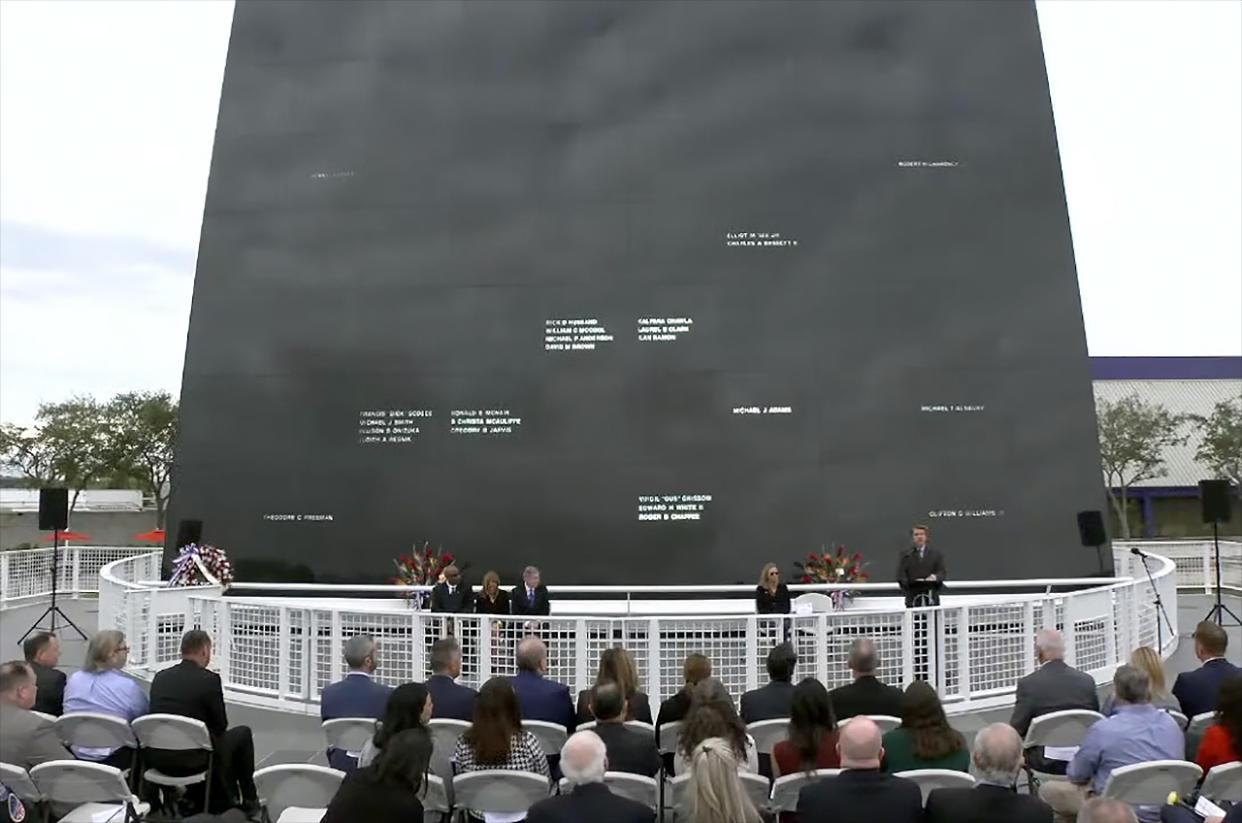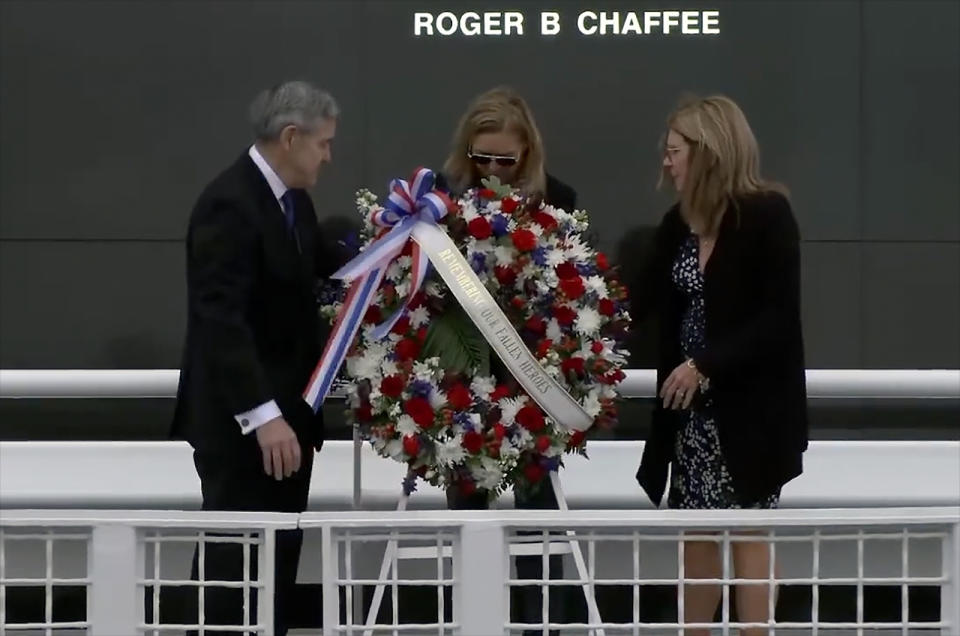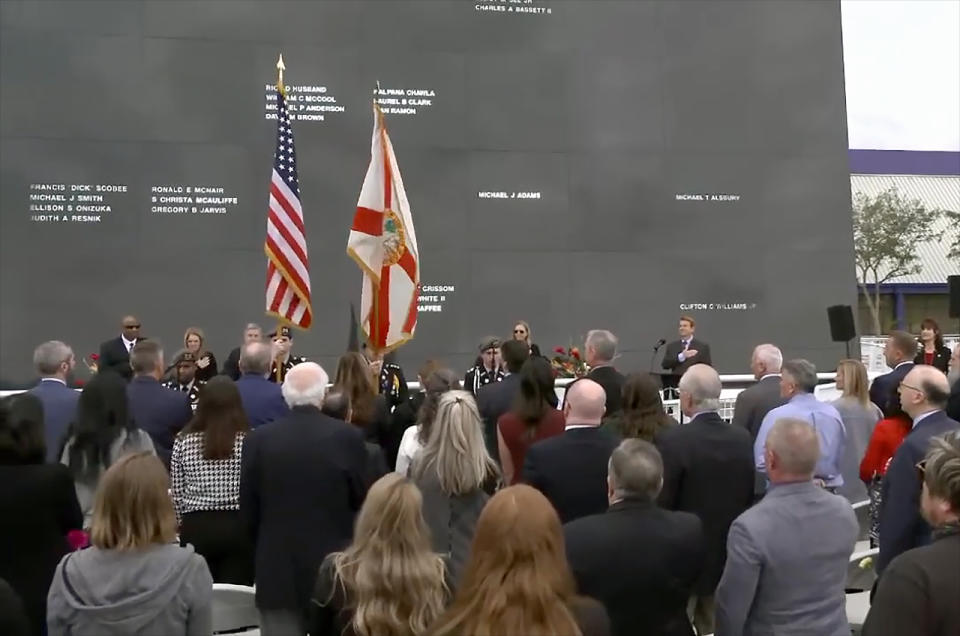NASA 'Day of Remembrance' marks 20 years since space shuttle Columbia tragedy

Twenty years ago, on Feb. 1, 2003, seven astronauts were just minutes away from returning to Florida's Kennedy Space Center (KSC) when they were lost with the space shuttle Columbia. Like 19 other astronauts who preceded and followed them in death, the STS-107 crew made the ultimate sacrifice while in the pursuit of exploration and advancing spaceflight.
On Thursday (Jan. 26), NASA leaders, elected officials and members of The Astronauts Memorial Foundation led a "NASA Day of Remembrance" ceremony at Kennedy's Space Mirror Memorial in Florida to honor and remember the fallen and, in particular, the Columbia seven.
"This year marks the 20th anniversary of the loss of the crew of Columbia during the reentry of STS-107. For some, that seems like a lifetime. For others, it seems like it was just yesterday. But for our agency, it is a time that lives here in the present, shaping our culture and forming our decisions, and helping us to forge the way ahead," said KSC Director Janet Petro. "As more and more people who were present in our workforce on that day of tragedy 20 years ago retire, it is imperative that our culture, our decision-making processes remain focused on the lessons that we learn from Columbia, Challenger and Apollo 1."
"Even as we look to the future, we do so with one eye on the past, reminding ourselves of those lessons and the price that was paid," said Petro.
Related: The shuttle Columbia disaster: What happened and what NASA learned
Dedicated in 1991, the Space Mirror Memorial displays the names of each fallen astronaut cut through the surface of the 42.5-foot-high by 50-foot-wide (13-by-15-meter) monument's polished black granite, such that light can shine through from behind. The names of the STS-107 crew members — commander Rick Husband, pilot William McCool, mission specialists Michael Anderson, David Brown, Kapala Chawla and Laurel Clark and the first Israeli to fly into space, payload specialist Ilan Ramon — appear on the memorial above and between the names of the astronauts lost in the 1986 space shuttle Challenger tragedy and the 1967 Apollo 1 fire on the launch pad.
The names of nine other astronauts who lost their lives while training, most during aircraft accidents, are positioned around those of the three fallen crews.
"Why do we do this every year? Why do we have a NASA Day of Remembrance?" said Bob Cabana, NASA associate administrator and a former astronaut. "Obviously, it is to honor our fallen comrades on the mirror, those who paid the ultimate sacrifice in our quest to explore. But more importantly, it's so we do not forget the hard lessons learned from Apollo, Challenger and Columbia."
"It is so important that they learn these lessons so that they are not repeated again," he said. "Why do we have to keep repeating the same hard lessons that this normalization of deviance — that you can have something wrong, but as long as nothing bad happens, it's okay. It's not."

In each of the post-tragedy investigations, it was found that by NASA diverting from its own stated flight rules, lives were lost. For Columbia, it was the agency's choice to keep flying after knowing that insulation foam was separating from the vehicle's external fuel tank, creating the risk for impact damage on the orbiter's susceptible heat shield.
"I don't ever want to have to go through another Columbia," said Cabana.
Before concluding the ceremony, Cabana, Petro and Sheryl Chaffee, chair of The Astronauts Memorial Foundation and daughter of Apollo 1 astronaut Roger Chaffee, placed a wreath at the base of the Space Mirror. The three, joined by the other attendees, then observed a moment of silence.
NASA also marked the Day of Remembrance and 20th anniversary of the STS-107 tragedy at other ceremonies around the country.
At the Johnson Space Center in Houston, a T-38 jet flyover concluded a commemoration held at the center's Astronaut Memorial Grove, where trees have been planted for each member of the NASA astronaut corps who have died. Similar wreath and flag-laying ceremonies took place at Langley Research Center in Virginia, Marshall Space Flight Center in Alabama and Stennis Space Flight Center in Mississippi.
The employees at Ames Research Center in California observed a moment of silence, while Glenn Research Center planned a panel discussion on safety with aeronautics and spaceflight experts.
Related: Space travel: Danger at every phase (infographic)

Related stories:
— NASA's fallen astronauts: a photo memorial
— New NASA video honors fallen astronauts of Apollo 1, Challenger and Columbia
— Space shuttle Columbia: NASA's first shuttle in space
NASA Administrator Bill Nelson, who flew on the last space shuttle mission that preceded the Challenger tragedy, was scheduled to lead an observance at Arlington National Cemetery in Virginia, where monuments stand to Apollo 1, Challenger and Columbia crews.
"NASA's Day of Remembrance is about pausing, remembering and uplifting the legacies of the NASA family who gave their lives to advance the cause of discovery," said Nelson in a statement. "While this will always be solemn day, it's also one of gratitude. We are thankful that NASA's adventurers shared their lives with us and made life better on Earth."
"As we continue to expand humanity's reach in this new era of exploration, we must always embrace NASA's core value of safety," he said.
Follow collectSPACE.com on Facebook and on Twitter at @collectSPACE. Copyright 2023 collectSPACE.com. All rights reserved.


